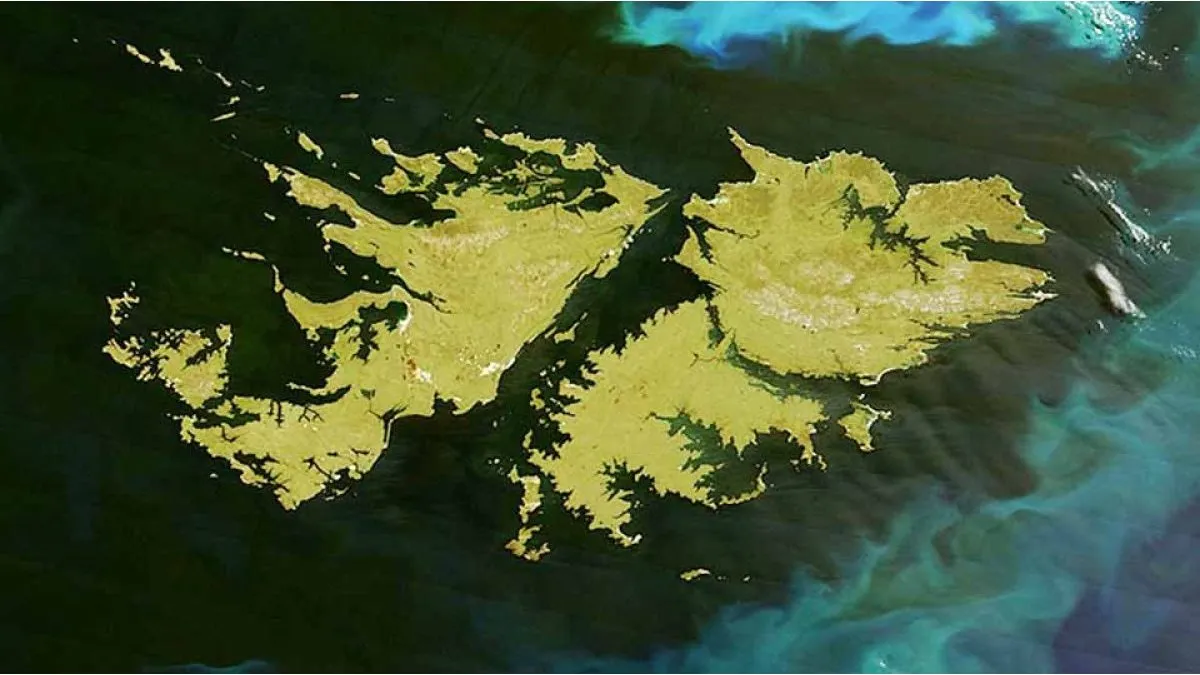Through satellite images, NASA managed to capture a biological phenomenon in the Falkland Islands.
It is about the massive blooming of phytoplankton in waters near the area, which covered a significant part of the continental shelf. Why it forms and what consequences it may bring.
Impactful biological phenomenon in the Falkland Islands: what is phytoplankton
The phytoplankton covered a significant part of the continental shelf, which caught the attention of scientists. The most striking aspect is the intense green and turquoise blue color it leaves in the ocean.
The image published by NASA shows kilometers of ocean flooded by phytoplankton, giving it that characteristic brilliant tone.
 Phytoplankton covered a part of the ocean. (Photo: NASA).[/caption>
Phytoplankton covered a part of the ocean. (Photo: NASA).[/caption>
It turns out that coccolithophores are the microorganisms responsible for giving the water that characteristic turquoise color, thanks to their coating of calcium carbonate.
While in the face of ignorance one might think that the presence of these microorganisms is harmful to the environment, scientists have debunked this.
This phenomenon is not only visually impactful, but it is also a fantastic explosion of microscopic life, which is essential for marine ecosystems.
NASA’s explanation of the discovery
In the kilometers closest to the coast, the tones were duller due to sediments, but as the phytoplankton moved away, the colors became brighter.
This circumstance led researchers to think that the variety and density of microorganisms is greater than previously thought. Therefore, NASA has already taken action on the matter.
According to their explanation, a key factor in this is the Falkland Current, a mass of cold water that flows from the south carrying various essential nutrients and minerals.
When this current interacts with local environmental conditions (such as water composition, temperature, and light), it creates a perfect environment for phytoplankton proliferation.
 The phenomenon in the Falkland Islands.
The phenomenon in the Falkland Islands.
How this impacts the environment
Thanks to the use of hyperspectral sensors in the PACE project, which analyze the color of the ocean in detail. With this technology, they could understand the health of the oceans and the impact of climate change.
In this regard, no further details have been disclosed yet about the implications for the rest of the environment of this phenomenon, but any harm has been ruled out.
They also emphasized the importance of preserving them as soon as possible.

